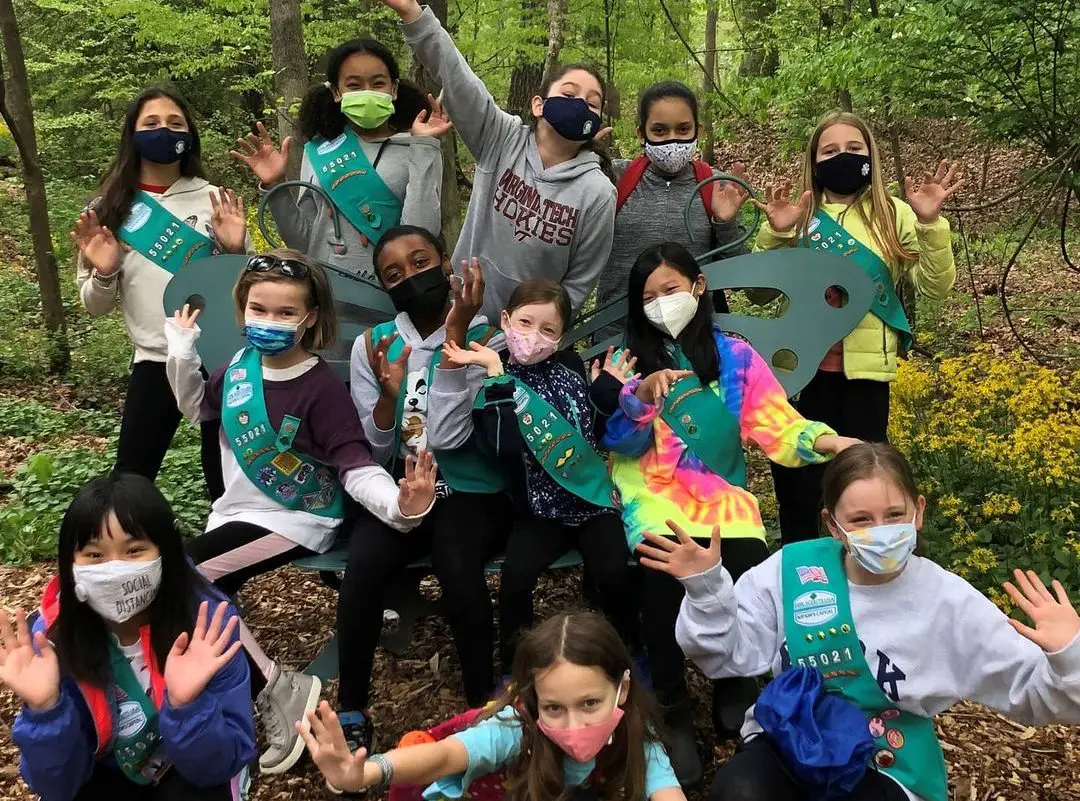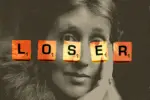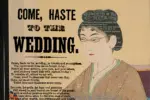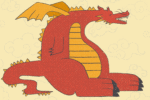As a new year begins, so does one of the most well-loved seasons of all time: Girl Scout Cookie season. A season in which the emerald and tan uniforms come out and help teach young girls business and finance skills. The Girl Scouts have been around for over a hundred years, beginning in 1912 and continuing today. It was formed in Savannah, Georgia, and has since become a global movement of young girls making a difference, beginning with themselves. Created at a time when women could not even vote, Girl Scouts helped women embrace what made them unique and use it to change the world.
Today, their goals are still the same, and yet the organization is generally looked over when assessing modern feminism. Since the early 1900s, Girl Scouts around the world have continued to form figures of change in their countries. From war efforts to establishing troops internationally, Girl Scouts have made a name for themselves in the business and activism world. While contemporary movements like #MeToo and HeForShe are making waves in feminism today, the past 100 years have earned Girl Scouts of America a place in feminism for its impact throughout history.
During its time as a significant movement in the U.S., feminism has had four distinctive waves. They began as early as the late 19th century, which can explain the establishment of Girl Scouts so early in the 20th century. Established in 1912, Girl Scouts began with the idea of women helping to change the world. Eight years later, in 1920, women secured the right to vote with the passage of the 19th Amendment. Both events helped the feminist movement move into the mainstream, beginning with the first wave of feminism.
The first wave, according to Martha Rampton at Pacific University Oregon, was “emerging out of an environment of urban industrialism and liberal, socialist politics.” Along with this, Rampton wrote, was the “development of women-only spaces” and efforts to use a special dynamic made possible when only women work together. The Girl Scouts, as an organization, fills the criteria perfectly. The second wave sprung up in the 1960s as part of anti-war efforts and civil rights movements across America. Individual issues included reproductive rights and passing the Equal Rights Amendment to guarantee social equity.
The third wave of feminism in the mid-’90s questioned social constructs, especially gender boundaries, and called for “experimentation and creative thought.” According to Rampton, it reclaimed more traditional feminine expression, especially “the very lip-stick, high-heels, and cleavage proudly exposed by low cut necklines — which the first two phases of the movement identified with male oppression.” The fourth wave, currently underway, is moving feminist thought out of the halls of academia and “back into the realm of public discourse.” It comes after, Rampton mentions, a time when “young women and men realized the third wave is either overly optimistic or hampered by blinders.”
Today, the feminist movement is using both the press and politics to bring attention to issues central to some of the earliest waves of the movement. Many of the issues are presented with additional nuance as more women speak out about their own experiences. One famous movement emerging from the fourth wave has been the #MeToo movement, which has allowed millions of women around the world to open up about sexual assault. Another movement created in solidarity with women is HeForShe, an organization founded by UN Women that works toward advancing gender equality. After 100 years of activism, feminists globally are still working toward equality for all, but by breaking down feminism by the main points of each wave, it is easier to see where the Girl Scouts have contributed.
Following a meeting with Boy Scouts founder Sir Robert Baden-Powell in 1911, Juliette Gordon Low decided to create the Girl Scouts, which came at the perfect time in American history. There was a change in the air for women who wanted the right to vote, and Low had founded the Girl Scouts with ideas such as inclusiveness, self-reliance and service at its center. Less than a decade later, Girl Scout troops began forming outside the U.S. in countries like Syria, China and Mexico.
By this time, a grassroots project led by the organization had taken flight: The Girl Scout Cookie Annual Sale. Between the months of January and April, over a million Girl Scouts sell their famous cookies across the country, clocking in at around 200 million boxes. Vox describes the initial phenomenon as a “cookie sale in their high school cafeteria as a way to fund troop activities” that has since become a world-famous sale that grosses millions of dollars each year. Vox also mentions John Frank, a Mintel Food Analyst, who told USA Today, “The annual Girl Scout cookie sale is a force of nature at the national level.” Their business model, according to Business Insider, is “75% of the money goes to the local council, while 25% goes to bakeries.” Not only is the model beneficial to local bakeries, but the sales also help teach young girls ages 5-18 about investments, business and economics.
The kind of entrepreneurial experience girls will take away from selling cookies can benefit them for life. The official Girl Scouts website describes a purchase of cookies as fueling the “local Girl Scouts’ adventures throughout the year, exploring what interests them, discovering their passions, and taking action on issues they care about.” For every box sold, the money goes right back into helping young women and girls find a place in the world. As one of the most famous aspects of Girl Scout membership, the cookie sales are just the tip of the iceberg when seeing their place in feminism.
When looking at the basics of the four waves of feminism, Girl Scouts have made distinct contributions to each one. Because the organization formed not long after the first wave of feminism began, Girl Scout troops are recognized as one of the “women-only” spaces that emerged during the movement’s early days. While young adults petitioned for suffrage, Girl Scouts created a space for girls to learn about inclusiveness and self-reliance.
Additionally, in the first wave, they helped participate in war and relief efforts, specifically, providing food and clothing to Americans suffering in the Great Depression. As immigrants began coming to America, the organization also promoted their troops by printing booklets in Yiddish, Italian and Polish. In the decade following, troops were established in Japanese internment camps based in Utah and California. By the end of the first wave alone, they had established a strong presence established not just in the United States but internationally, with the founding of the World Association of Girl Guides and Girl Scouts in 1928.
As the second wave took off in the 1960s, the Girl Scouts began to lend their voices to the fight for racial equality in America. While troops in earlier years have mostly consisted of white girls, young women of color had established their own troops, which brought the organization into the fight to end segregation. They ended up launching what was called ACTION 70, which was a “project to help overcome prejudice and build better relationships between people.” In a move to help end social unrest in the nation, the project caught the attention of Lyndon B. Johnson, then president of the United States.
Later on, in the ‘70s, Girl Scouts joined anti-war efforts and later offered aid to Vietnamese refugees as they adapted to their new homes in America. The third wave of feminism embraced traditionally feminine qualities to reclaim things once associated with male oppression. At the time, the launch of the first official Girl Scouts website greatly impacted young women across the country. Its accessibility made empowering young girls easier than ever. In 1996, the website was “visited by more than 18,000 people in its first three months of operation.” The efforts made boosted the Girl Scouts’ numbers greatly, and today, more than ever, girls are being taught about leadership, teamwork and treating people with fairness.
As the fourth wave of feminism continues to unfold, the visibility of trans women and women of color is more important than ever before, and even Girl Scouts have made their stance on such topics. According to their website once again, the Girl Scouts’ position on serving transgender youth is “if the child is recognized by the family and school/community as a girl and lives culturally as a girl, then Girl Scouts is an organization that can serve her in a setting that is both emotionally and physically safe.” While it is handled on a case-by-case basis, the statement is a major step in including trans women in the movement toward gender equality.
While the fourth wave of feminism continues to unfurl, there is more than just one idea of gender equality. Ideas like gender bias, bodily autonomy and gender equity are just a few that are often included in the conversation now. Although the Girl Scouts aim to help “girls develop self-confidence and good decision-making,” the organization continues to make its mark on the world. The World Association of Girl Guides and Girl Scouts has reached 10 million girls in 152 countries, and today, efforts include developing movements “where every and any girl feels confident to lead and empowered to create a better world together.”
Currently, the fourth wave is achieving goals that have been pursued ever since the second wave. Women are becoming figures of change where it matters, in positions of leadership, higher education, business and politics. As newer generations of Girl Scouts age out, many set their sights on including themselves in the fourth wave and making its message stronger than ever. From the business and entrepreneurial skills of an annual cookie sale to having members speak at conferences around the world, Girl Scouts have helped women become the best they can be and will continue for years to come.

















